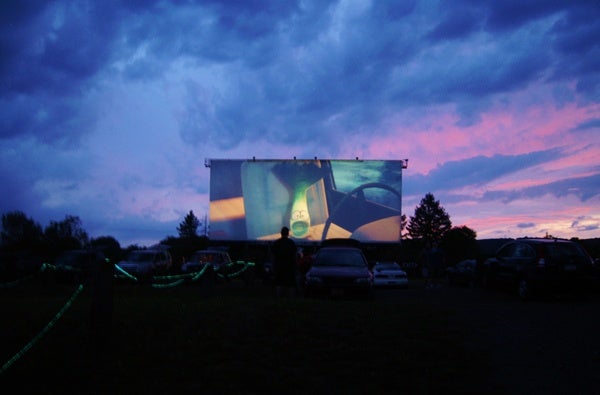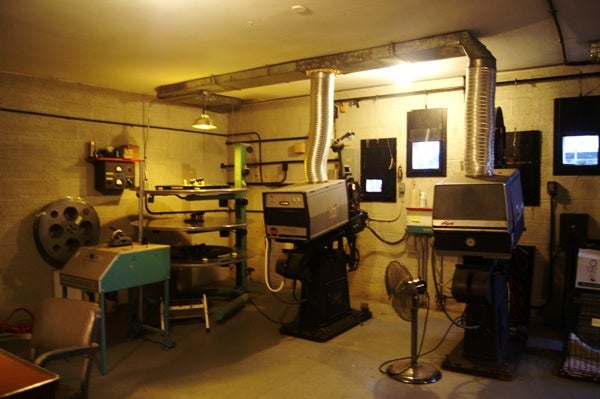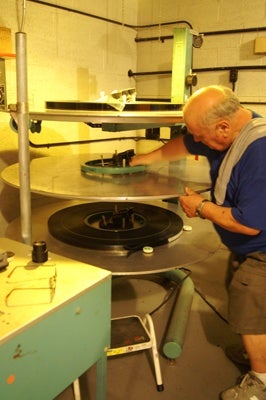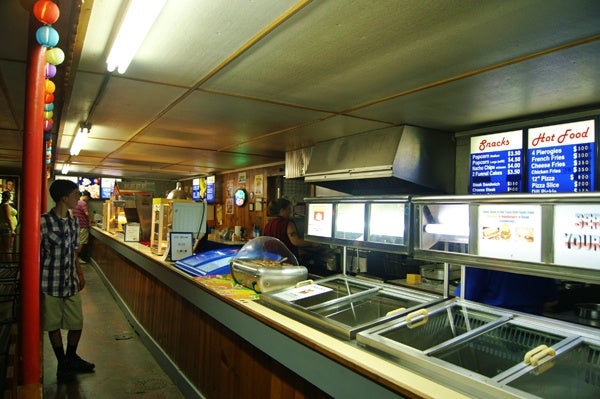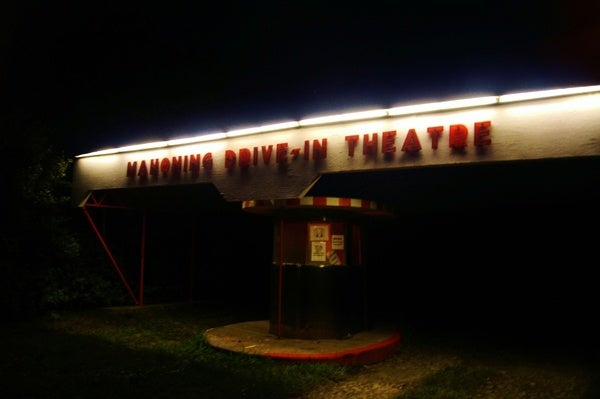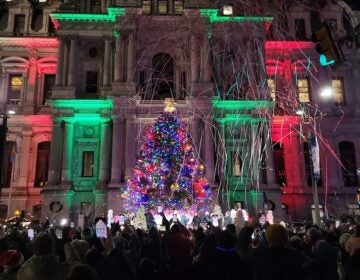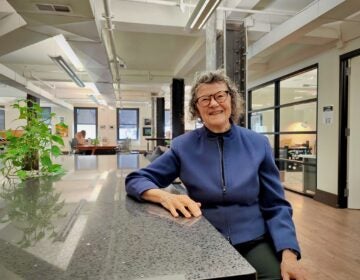Philly’s Fringe festival begins to expand, plus some picks
This is the year of the expanded Fringe. The Philly Fringe festival – now officially called FringeArts – has not just a new name, but a new outlook on its future that includes more of the cutting-edge, risk-taking, unusual, often inventive productions.
The festival, which begins Sept. 5 (with some preview shows earlier in the week), is itself expanded. It runs this year through Sept. 22, which is 18 days – two more than in the past.
What was formerly called the Philadelphia Live Arts and Philly Fringe Festival, and what just about everyone calls “the Fringe,” still has two components: invited works by the FringeArts organization and self-invited works by everyone else.
The “invited Fringe” this year includes 16 shows, and the number of them that FringeArts is bringing in from out of the country marks another Fringe expansion: eight in all, from Norway, England, Thailand, Canada, Italy, Greece, Ireland and Germany. The other invited shows come from United States theater artists, dancers and musicians, including a number of Philadelphians.
As for the rest of the work, all self-produced, the Fringe this year has 136 shows over its 18 days – what the festival now calls the “neighborhood Fringe.” This marks another expansion: the festival now has enough geographical variety to break down its offerings into general neighborhoods: Center City and Old City (still the area of critical mass for the Fringe), Fairmount, Fishtown-Kensington, Northern Liberties, Northwest, South and West Philadelphia, and even four suburban offerings as far away as Allentown.
One place the festival won’t be using is its first-ever headquarters, a $7 million former fire department pumping station in the shadow of the Ben Franklin Bridge at Race Street and Columbus Boulevard. The building – with two theaters, a restaurant-bar, a box office, FringeArts offices and a two-level outdoor space – is not yet fully revamped for this year’s festival, forcing some late-planning shifts in venues because Nick Stuccio, head of FringeArts, had been counting on already occupying the space.
But one of the theaters is expected to be ready in October – and that means another Fringe expansion. Beginning at that time, FringeArts will produce work through the year, answering a question many devotees have been posing over the 17 years of the festival: Why can’t we see this sort of work all year long? Two shows are scheduled for the new building in October and two more in November. In December, Pig Iron Theatre Company – the Philadelphia-based troupe that is widely regarded as one of the American theater’s most inventive – will remount a past Fringe hit, its outré rendition of Shakespeare’s “Twelfth Night.”
The Fringe festival has attracted a number of solid fans over the years, and some theater artists say Philadelphians are willing to see new work on main stages through the year because the Fringe has introduced them to the idea that new work is valuable. (A few years ago, a group representing the region’s theater companies determined that a fourth of all productions here were world premieres.) Even so, year-round audiences in a region where theater has exploded into 50-plus professional companies are not necessarily Fringe audiences.
Who goes to the Fringe festival? From all appearances, people who enjoy theater and dance, but also like taking risks and are not averse to paying relatively small ticket prices to see something that could just as easily be awful as it could be terrific. Fringers, as some call them, sometimes race across Center City (or nowadays, neighborhoods) to see an untried show at 7, another at 8:30 and still another after that. They like the unknown, or the bizarre, or a possible new take on a good old, regular play.
They like a play in an established theater (the Wilma, the Suzanne Roberts and Plays & players are examples of Fringe sites) but part of the Fringe fun is also watching performances in someone’s tub (this year, “Bathtub Moby-Dick”) or a graveyard (“Boneyards,” “Spoon River Anthology” and “Six Feet Above and Under”), a restaurant (“And Tell Sad Stories of the Deaths of Queens”), a tall ship (Eugene O’Neill’s Sea Plays), a former prison (“The Ballad of Joe Hill”), an armory (“Hush Now Sweet High Heels and Oak”), a museum (“Jennifer the Unspecial”), the library (“The Quiet Volume”) and several churches, saloons and a synagogue.
Fringe audiences also like improvisation, well represented on the schedule.
Whatever they enjoy, they’ll be getting more of it. “For 17 years, we used to have just the days of the festival,” says Fringe director Stuccio. “Now the festival’s invited productions will be able to gather more artists here to see what they’re saying around the world, and we can continue around the year with an emphasis on local artists.”_
For information on all FringeArts shows in the festival, including dates, times and venues, visit www.fringearts.com._
What to see in the Fringe? Part of the fun is the guesswork. Much of the “invited” Fringe – the 16 shows the festival produces itself – has either played somewhere else in the world and been reviewed, or has been followed by festival producer Nick Stuccio in its evolution. The rest of the Fringe – the self-produced work – could be anyone’s guess. So mostly, people pick Fringe shows by what seems appealing to them, even though many of the descriptions on the FringeArts site are scant, at that
I pick my choices for reviewing (or just plain seeing) from the track record of performers and stage or dance companies; many are longtime Fringe entries. Also, several of the region’s smaller professional theater companies like to begin their seasons as part of the Fringe. Mostly, though, I also choose what seems appealing.
Here, in no particular order, are a few of my choices for this year. If they work, great. If they don’t, well, take some solace that most Fringe shows are shorter than normal productions. And besides, another part of the fun is the unknown.
PAY UP: This one’s a sure-fire choice, a revival of a 2005 runaway festival hit by Pig Iron Theatre Company. It’s a funny exploration of your own idea about the value of money – and what value means. In this show, theater is happening all around you. You have to choose what to see, and quickly, and what you can afford with the money you’re given when you walk into the show. Pig Iron’s idea for the show came from a study by Yale economist Keith Chen, who attempted to teach monkeys how to use money.
THE BALLAD OF JOE HILL: Philadelphia’s Swim Pony Performing Arts uses vaudeville, inside Eastern State Penitentiary in the Fairmount neighborhood, to explore the life of iconic union leader and murder defendant Joe Hill. Animation figures in.
HUSH NOW SWEET HIGH HEELS AND OAK: Chorographer Brian Sanders, a Philadelphian with an eager following, is responsible for some of the festival’s hottest tickets. At the 23d Street Armory off Market Street, his physically daring troupe called JUNK explores nursery rhymes.
ANTI-HERO: Another Philadelphia group, Tribe of Fools, offers a show about the Philadelphia Parking Authority. Tribe of Fools has several times produced the dark-horse of the Fringe, edgy and funny shows with lots of kinetic performance and raw emotions.
THE OBJECT LESSON: Philadelphia theater artist Geoff Sobelle has put a mound of boxes with everyday objects inside the theater at Christ Church Neighborhood House, near Second and Market Streets, in an attempt to uncover the secrets of life in storage.
MOSES(ES): A world premiere of a dance by New York-based Reggie Wilson/Fist & Heel Performance Group examines different iterations of Moses, secular and religious, and the stories of ancient and modern migration – particularly African migration — intertwined with the story of Moses.
THE SEA PLAYS: Two rarely done, ocean-themed plays by Eugene O’Neill – “Bound East for Cardiff” and “In the Zone” — are being performed by the Philadelphia Artists’ Collective at the Tall Ship Gazela at Penn’s Landing.
LIFE AND TIMES: Theater artists from the Nature Theatre of Oklahoma called a friend, asked her to tell her life story, and created a five-episode piece from what she told them. It spans 12-plus hours, which is how you can see it on Sept 14. Or you can see it broken down. In any case, word is that each episode stands on its own.
FRANZ KAFKA’S THE CASTLE: Philadelphia’s Idiopathic Ridiculopathy Consortium turns Kafka’s unfinished novel, about a castle and its hold on the citizenry, into a stage show that it’s calling “hilarious and treacherous.”
FAMILY SHOWS: The festival contains some shows suitable for families, particularly some circus performance. An invited show, produced by FringeArts, is LEO, performed by William Bonnet. It’s a combo of circus and theater arts, and live action and video animation. The show is a take on the laws of gravity. Another family show that seems promising, and has been done in New York, is Jennifer the JENNIFER THE UNSPECIAL, from a group called Bushwick to Broadway. It’s a musical about four eighth-graders who go on a time-travel adventure.
THE QUIET VOLUME: What is the meaning of an internal world? That world, according to Britain’s Ant Hampton and Tim Ethells, can be found where concentration and silence intersect in a library. At the Free Library’s central branch, they’ll take two audience members at a time every 15 minutes to explore that world with sets of headphones and a soundtrack of whispered words.
A DOLL’S HOUSE: Philadelphia’s Ego Po Classic Theater reinvents Henrik Ibsen’s classic, with one actress accompanied by a doll’s house and a collection of toys. It’s the first in an Ego Po season exploring Ibsen’s works.
THE SOCIETY: The Jo Strømgren Kompany from Norway offers a physical performance with a nonexistant language as a way to explore a societal evil – in this case a tea drinker who invades a Europe consumed with coffee.
OUT OF TIME: Irish dancer Colin Dunne, known best for “Riverdance,” creates a multidisciplinary solo show about being a dance prodigy, then an artist, and the way a tradition of Irish step dancing shapes his life.
DUTCH MASTERS: Philadelphia’s Azuka Theatre opens its season with a play about a black man and white man who strike up a conversation on a subway train while Los Angeles smolders from rioting in 1992.
THE TALKBACK: This show skewers the talkback – that event in theater when the audience stays after a show to talk with the people who create it. The catch here is that there’s no show to consider, just a talkback. The production comes from the Berserker Residents, Philadelphians who have created Fringe hits before.
WHYY is your source for fact-based, in-depth journalism and information. As a nonprofit organization, we rely on financial support from readers like you. Please give today.


